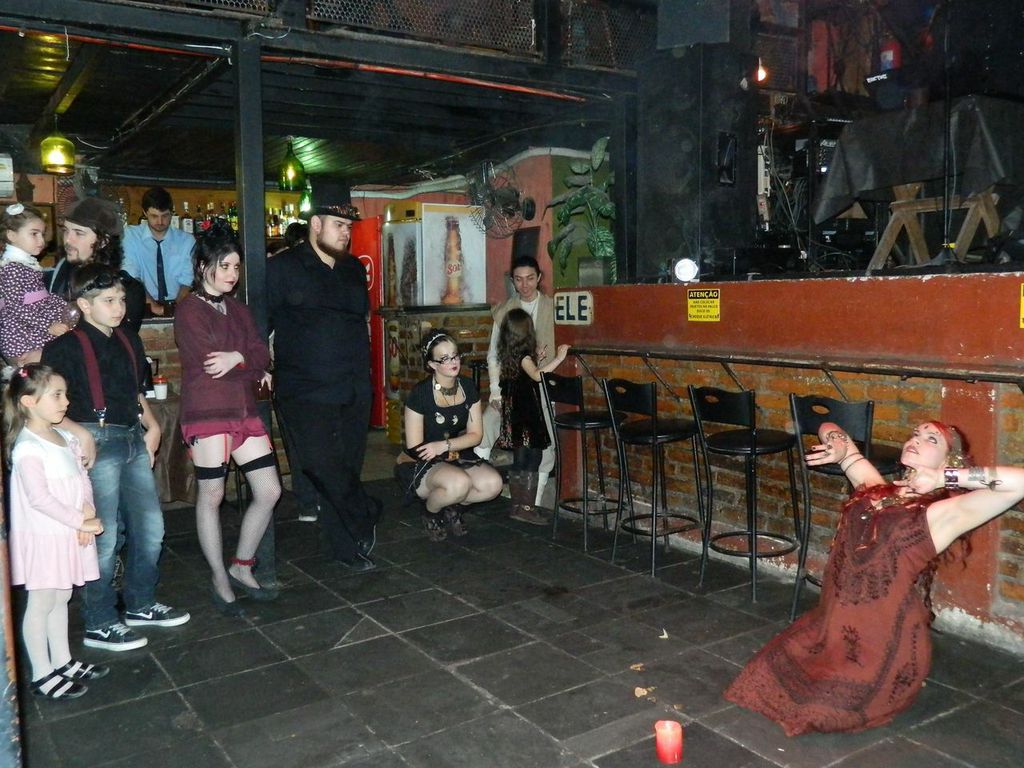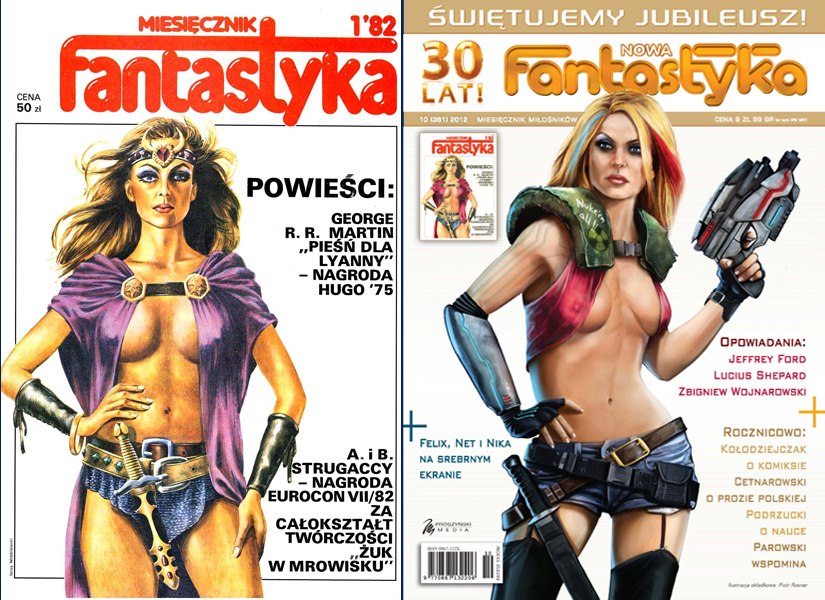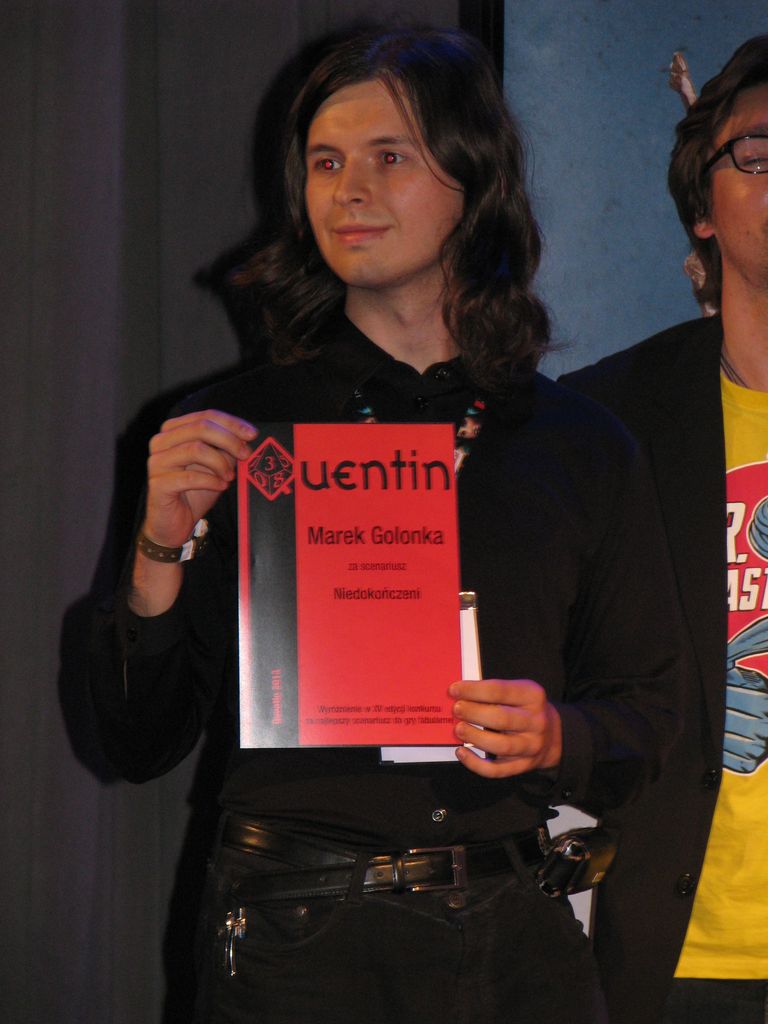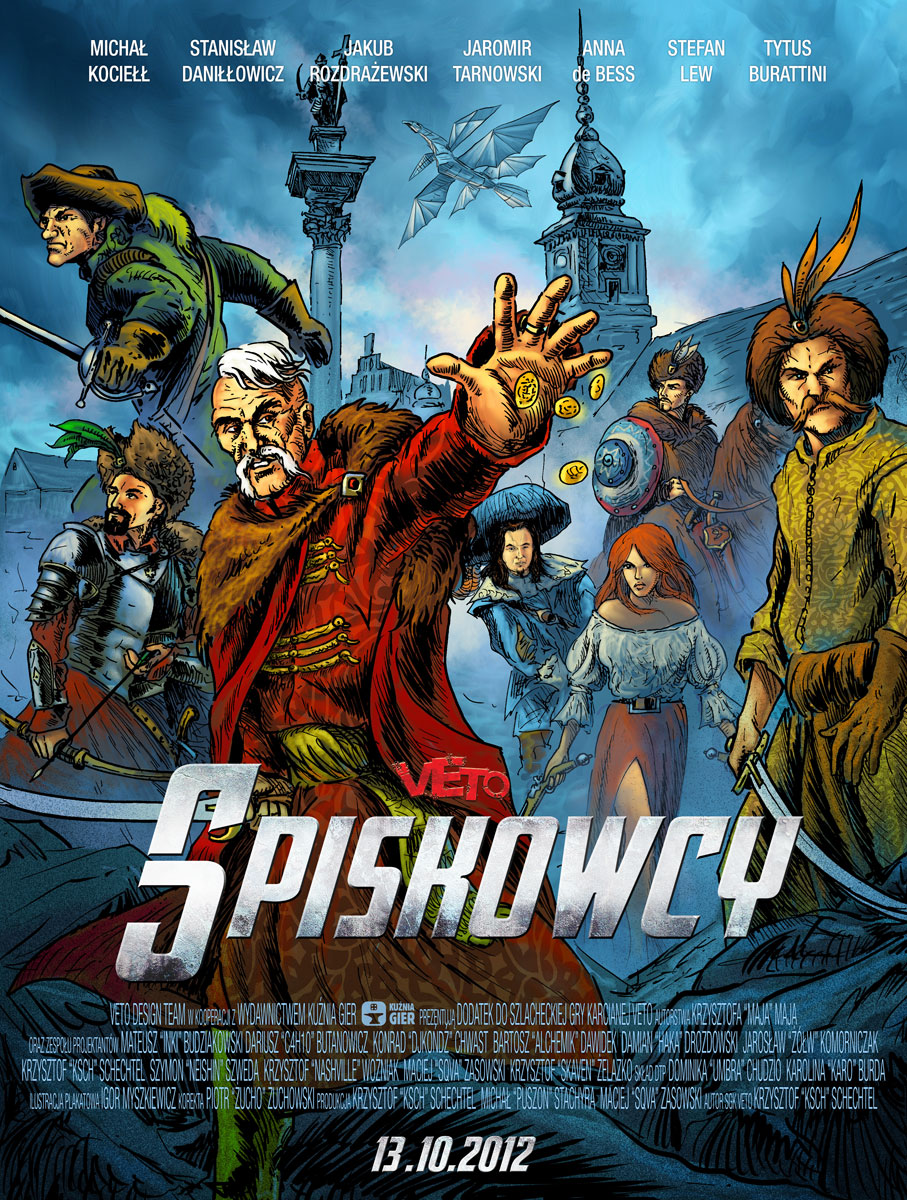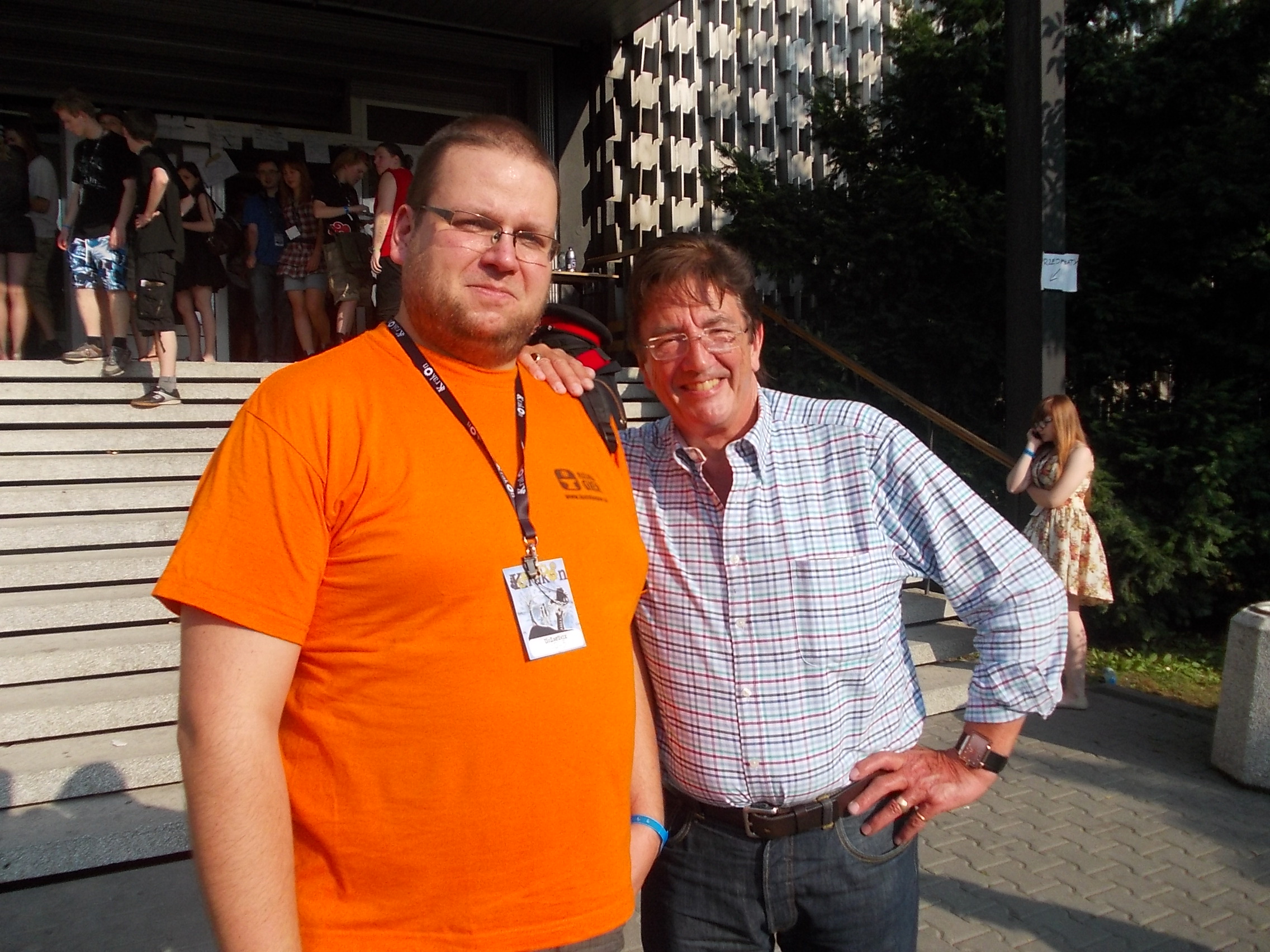Citizen Fan: An Interview with Filmmaker Emmanuelle Wielezynski-Debats (Part Three)
/Many of the texts cited by the fans here are from the Anglo-American media realm or from the world of Japanese manga. Are there popular texts from France that has generated a fan-like response and if so, what can you tell us about them? From what I observed, 99% of the fans I met, are in American or Japanese fandom. Only one or two mentioned working on French literature or French films. Natacha Guyot, for instance, is one of these exceptions. She worked at AO3 (for the Diversity showcase) and so she is very aware of this question. She practices vidding with French Canons such as"Angelique, Marquise des anges" or more recent French TV series. She uses French music, as well.
French canons do exist. Sometimes, we do not know the French origin of the canon : it is the case with Code Lyoko, or Dofus video games. In the past, there were always sequels to Alexandre Dumas’ works, but the thing is that nowadays, Fanfiction are often written in English, when it comes to canons such as Les Misérables, Le fantôme de l’opéra, Mademoiselle de Maupin, Les 3 mousquetaires, etc… I had the impression that there are more American fans writing fanfiction around Les Misérables or Dumas’ books, than French fans.
French fanfic writers probably want to have a large community of readers, they probably feel that would not be possible around French canons. They want their readers or their audience to know well the characters, the universe.
It is also possible that French culture would impress them too much to dare to write fanfic around it. Most of the fans I met told me they didn’t like our literature. They disliked reading at school. They have the feeling that classical books are boring. One of Citizen Fan's characters told me “Clearly in France, we have the feeling that there is one culture that is worth it and another one that is worth nothing.”
In my opinion, our French authors have been sacralized, by our culture and by our laws as well, meaning nobody is allowed to touch them. This might be the best way to kill them. Several fans told me “I would certainly never read Proust ! ” This struck me because these people read a lot and have a very large culture, including Japanese mythology for instance, but, from what I‘ve seen, they do not seem concerned with the French classics.
Now, Lionel Maurel reminded me that if you take the example of “Tintin”, the society Moulinsart, which owns its rights, defend them in a caricatural way: they attacked systematically fan sites. I wonder if , under the circumstances, Fandom can emerge or would survive. It is the same with “Le petit Prince”… And “Arsene Lupin” is not as famous as “Sherlock Holmes”. Or should I write “Herlock Sholmes”, like Maurice Leblanc, father of Lupin, used to name a British detective involved in several Lupin’s adventures, providing us with some great crossovers! But Maurice Leblanc’s family would have blocked any Fandom’s crossovers. That’s for sure. Probably some fans know about that and do not want to take risk.
I have to put forward three recent French canons that have gathered around them, very large fans communities, involved in fanarts, cosplays and fanfilms, but yet not really in fanfiction writing. They are either TV or Web series. Their names are “Hero Corp”, “Le visiteur du futur” and “Noob”.
To what extent are these French fans engaging with fans from other parts of the world via the web?
From what I observed: a lot! Fans read and write in English. It is one of this things they seem to all share: English.
They engage with other parts of the world very easily. I met some who make collaborative vidding with Russians. Others challenge cosplayers from all Europe. Cosplayers send their pictures to American Video games editors via Facebook and intend to initiate conversations. They make digital fanzines with Canadians. They publish American fanart. They participate in conventions all over Europe.
Fandom is helping to erase difficulties. Some who had never left France, took the plane to join a convention or a festival, to get an interview of an actress. MLP fans organize conventions, thanks to crowd funding, where MLP authors come from Los Angeles.
Manga fans learn Japanese, they travel over there. They have an expertise about anything Japan. Did you know that the main French fans convention is called "Japan expo"? Japanese video games producers usually send 50 of their top-management to attend this unbelievable event. France is the second largest market for Manga, after Japan. Some fanzine associations are big enough to invite Japanese authors to make a tour in Paris.
And also, very recently, NOOB team received an award in Los Angeles, as one of the best web-series. Funny thing is that French media gave this information but had never mentioned NOOB during the last years.
You talked to both male and female fans on the project and you often asked them about the gendered dimensions of fandom. Can you say something about what constitutes masculine or feminine modes of fan engagement in the French context?
A : Female fans are more numerous. In TV series, like Castle, there was 3 boys out of 70 contacts I made. I wanted to have boys in Citizen Fan, and so I clearly made efforts to have them.
Boys are gathered in My Little Pony fandom, where apart from one woman in the convention staff and maybe a few cosplayers, I’ve met only boys. I’ve seen a lot in the Video Games fandom, some in mangas and a lot in Star Wars.
When it comes to fanfiction, boys literally vanish, except for MLP, some video games and manga. During the Multi-fandom IRL fanfiction challenges, I attended, there was not any boy. Maybe one or two were online. When it comes to becoming a professional writer, only one person told me that was what he wanted and he is a boy. Girls never said so, they told me the opposite: they said they would never be a professional writer.
Fanart (drawings) seems more genre-balanced. For what I observed, maybe boys are a bit more numerous.
Cosplay is apparently also mostly feminine, except for Star Wars where 80% are male according to Arnaud Miralles, (the president of French 501st).
Fanfilms are totally different from boys to girls : for what I observed, boys gather 100 friends, with proper equipment and 4 cameras. Shooting looks like pro. Girls I have observed, gather 10 persons and 1 camera and the result seems less important than having a good time.
According to what I saw, Boys seemed engaging with a high degree of organization with clear objectives, they speak in public, they show themselves more, on Youtube or during convention panels. I observed that Girls have a high degree of personal engagement, they give more of their time and somehow are less concerned with what people think. They remain also more anonymous, they mentor and beta-read a lot.
But all this is very subjective and I must add that making documentaries, women are always more numerous and volunteer. So it might be that male fans avoided me.
American fans are increasingly struggling with the ways they are being entangled in the operations of the American media industry, as logics of engagement start to impact the way Hollywood interacts with its audiences. To what degree has this focus on engagement impacted the French media industries, which come from a very different tradition, one more grounded in public service and artistic enrichment than commercial success?
Manga:
A few years ago, one of the main French book publishers asked one of Citizen Fan's character belonging in the manga fandom, to give them some advice in choosing and publishing a manga. This fan helped them as much as he could. He helped them choosing the manga, having it translated but then the publisher didn't listen to what the fan said about the drawings, the jacket and several other "details". This manga did not do well on the market. The fan came out of this experience thinking there was no dialogue possible, because his expertise was not taken seriously.
Fanzine production in Manga is huge and very good and more and more numerous. People access printing technologies and produce faster. And yet they have not really a distribution circuit. The industry is probably keeping an eye on what fans produce.
Books: 1 - Publishers like Bragelonne are really well aware of fanfiction and they keep in touch with fandom. They released “Fangirl” here, in French, and for what I heard when I met one of their staff, Isabelle Varange, she had been a fanfic reader for a long time. This publisher is going to release Captive Prince in France.
2- There was once a fanfiction challenge, launched by Gallimard Jeunesse , following a book released : “A comme Association” ( P. Bottero & Erik L'Homme).
3 - Here is another example of an editor, Hachette, trying to catch the fanfiction practices. According to Fanfic writers, this s not truly fanfiction writing. In fact, they ask for original stories and they intent to control the texts.
Video Games : The Industry organizes a commercial event in Paris, (Paris Games Week) gathering 300 000 people during 2 days. The Image of this gathering is a very aggressive one. The video games are sold with Ferrari cars parked next to the desk, with scantly dressed women standing next to them… However, one of the organizers told me how much he would like cosplayers to come to this event. One of his reasons would be to please Japanese designers and producers, because they like cosplay and like to have Fans not to far from their games. For what I heard from fans, Paris Games week is very far from being the place to be. Are they going to manage a cosplay challenge ? We’ll see.
TV : I've heard of some transmedia experiment related to Plus belle la vie (France Televisions’ Hit ). This approach didn’t focus on fandom creativity. It was more like an online game to enhance the universe. There were not any fans contents produced. Fans were just involved as an audience. France Televisions, thanks to its channel “France 4” has done a great job around two French Canons Hero Corp and Le visiteur du futur. They met the fans in conventions and there was a dialogue with the fandom. This might be the first example of French canons really active fandom, communicating with a Broadcaster.
Emilie Flament who has this fan culture and was part of Citizen Fan‘s team as well was in the staff that broadcasted both. Here is what she told me about Hero Corp :
“I have the impression that with the arrival of new media, industry realized that public participation was at stake. Passive audience was a disappearing specie. In front of the multitude of contents, in order to keep the audience, they had to really catch them. Traditional media are starting to understand it and they have engagement strategies more or less written and editorialized. The example of Hero Corp is a bit of a an UFO in French television. This comedy around super heroes universe gathered a large community of active fans during the first two seasons (2008-2010) It was aired on TV in a quite confidential way. When they realized there would not be a third season, fans mobilized online and IRL, going to see the producers and broadcasters, exactly the same way as Veronica Mars or Roswell fans did in the US. In 2012, France 4 ordered a season (and now they are in the 4th one). Fan mobilization clearly influenced this decision but it also provoked the launching of a totally new transmedia process for new seasons : the show runner, Alexandre Astier imagined a multi-supports narration, giving exclusive elements to fans, such as web series, bonuses, etc… through a dedicated application.”
The example of NOOB (the web-series) Noob is a French amateur web-series that is something like 9 years old. Video games characters inspire it. It has its own fans. These fans supported the crowd funding initiative launched one year ago that broke European records ( more than 500 000 euros in a few days) . They are now shooting a feature film. They became “Canon” or mainstream and yet the traditional media never talked about them.
To conclude on this, I would say that given the little knowledge our industries have of fans activities, their strategies are not yet having a strong impact on Fandom’s life, and are not “disturbing”. I agree on the fact that France has a strong tradition of public service ( Citizen Fan belongs to this), however, there is also the law issue, and the fundamentally elitist culture issue. All that stops the audience and tells them : stay quiet ! What kind of engagement will develop when the audience is expected to remain passive ?
In the end, what happens is that French fans engage mostly with American industries, naturally, since they are fans of American canons. They get to know about Amazon kindle worlds, they are Youtubers…
You've produced portraits of a number of fans which show us something of the world they inhabit -- their homes, their cultural practices, etc. What did you hope for people to see as you situated these fans in their social settings?
I asked what was the easiest for them. We chose the setting accordingly. They had to feel at ease and so I often let the choice to them. I also wanted the audience to identify with my characters, to have a genuine idea of who was talking. They are not "pirates" or "hysterical idiots" or whatever : they are everybody. They live ordinary lives. Yet, they are not filmed always in their home. Sometimes it was not possible, so I filmed them at my place or during conventions. It is a film about people. I hope the phenomenon of transformative works, in France, will have their faces, so it can be known, understood , and hopefully authorized by the French law.
You directly reproduced a number of examples of fan art and fan media within the project. Did you encounter any push-back over making some of this work as public as you do?
In the part called EXPLORER, I had 5 persons out of 400 who said NO ! To tell the truth, I made a deal that was : you authorize me to show your work and I link to your account on Deviantart, Facebook etc... The webdoc probably was more easy to accept , for them, than a movie screened in theaters. They are used to share their arts online. In Le PHENOMENE, I had no problem, because the fact to show their work was always, from the beginning, something I wanted and they agreed. France Televisions is well respected, as a public service. They never doubted me or France Televisions.
Tell us more about the choice to make this a nonlinear documentary via the web as opposed to a more traditional kind of linear documentary feature? Why was this approach appropriate for this subject?
This approach allowed me to be where they all were and where their creations were. This is a segment of population that is no longer in front of TV. I would have liked to have a linear version on TV as well, for the larger audience, but it was never accepted. The webdoc allows me to put more information without really making a longer film : each character's video last about 10 minutes and I hope it brings enough information so the audience can think about it as representing fandom. If someone wants to come back and watch another character, it is possible 24/7, from every where in the world. This is a gift for the documentary maker. Usually, we meet the audience during screenings in festival. It happens once a month. Here, anyone can send me a message, and for instance the fan artists already gave me extremely valuable and gentle feedback.
I would add two more reasons to choose the webdoc : 1- The audience can enhance Citizen Fan by uploading new works. This is the least we can do dealing with fandom creativity ! 2- The illustrations surrounding the interviews, are the ones I also used in the videos. In the linear format, I could only thank them in the end credits. Nobody would ever remember them and where it comes from. They are like a dead illustrations. Unless you recognize the work immediately, which means it is something as famous as “la Joconde”, anything unknown remains unknown. Here, illustrations are "alive" : if you like that Pony, just click on it and see more of the same fanartist. Then, if doing so, you forget about Citizen Fan, never mind ! The aim of this documentary was to send you there...
Emmanuelle Wielezynski Debats was born in 1970 , she is married and mother of one. Emmanuelle grew up in Algeria, Ivory Coast and France. She was always interested in films and originally wanted to be a scenario writer. She graduated from a Business School in France and attended Film Studies, aside from an MBA program, in Montreal. In 1993, she registered in Anthropology, in Paris VII (Jussieu) with a major in Visual Anthropology. In 1995, she directed a short film, La Voie Blanche. For 12 years, Emmanuelle has worked at various film production companies, as an assistant to directors and to an editor as well. She now lives in Normandy with her husband, Michel Debats, a film director ( Oscar nominated Winged Migration). In 2007, together they launched their own production company, La Gaptière Production, focused on documentaries. (www.lagaptiere.com)
La Gaptière Production has produced 5 films, starting with School on the Move, in 2008, a feature film released in theaters, that was selected by 50 festivals around the World and won 14 awards, as anthropological documentary, in several countries such as China, Russia, as well as the US (Columbus, Ohio and in Missoula, Montana). Then came out three TV films, Femmes en campagne (about women in rural world), Une jeunesse en jachère (about being young in rural world) and Qu'allez-vous faire de vos vingt ans ? (about Jean Jaurès' s legacy). Emmanuelle has worked during 3 years on a more personal project : Citizen Fan, just released as a webdoc.




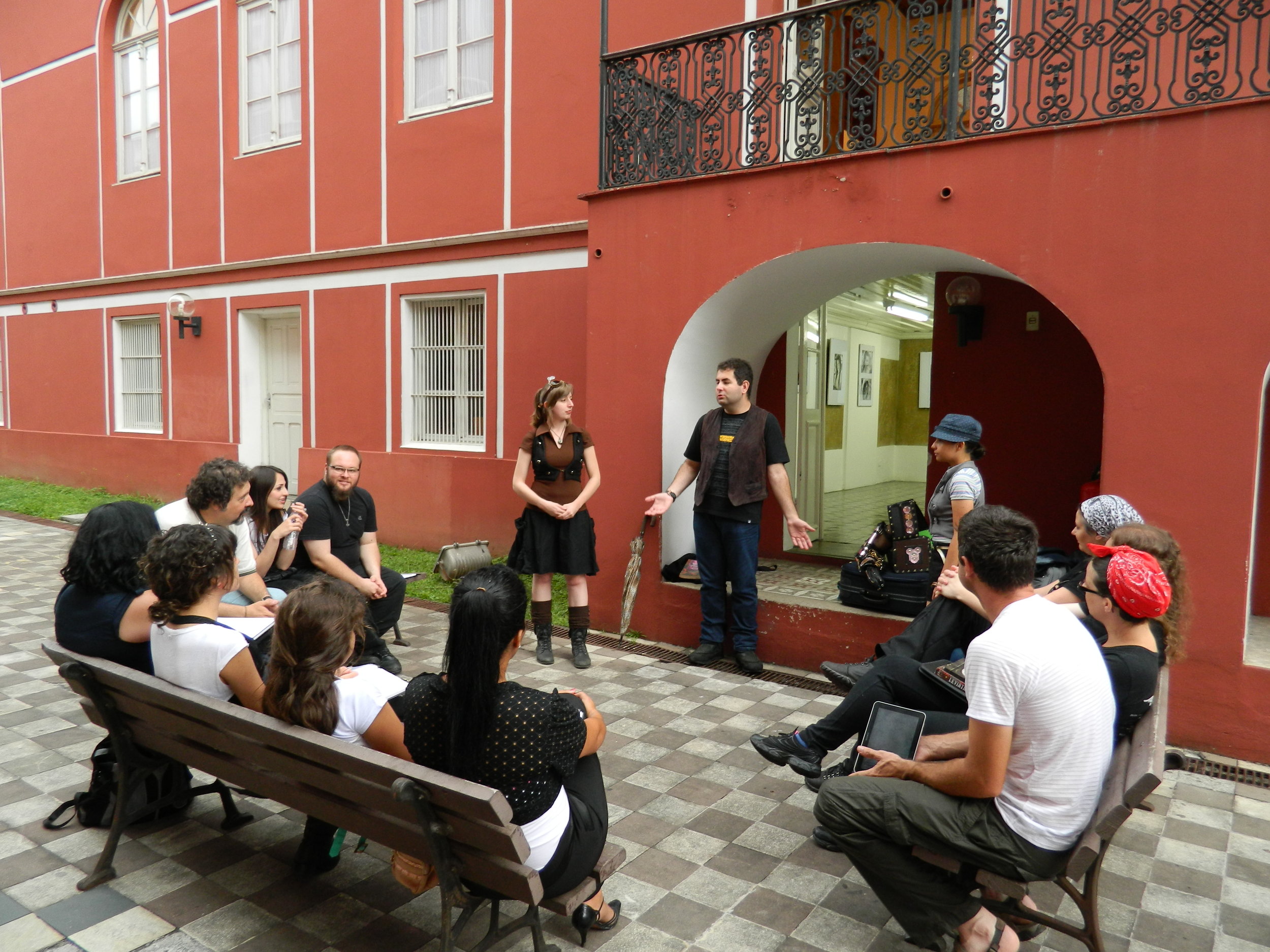
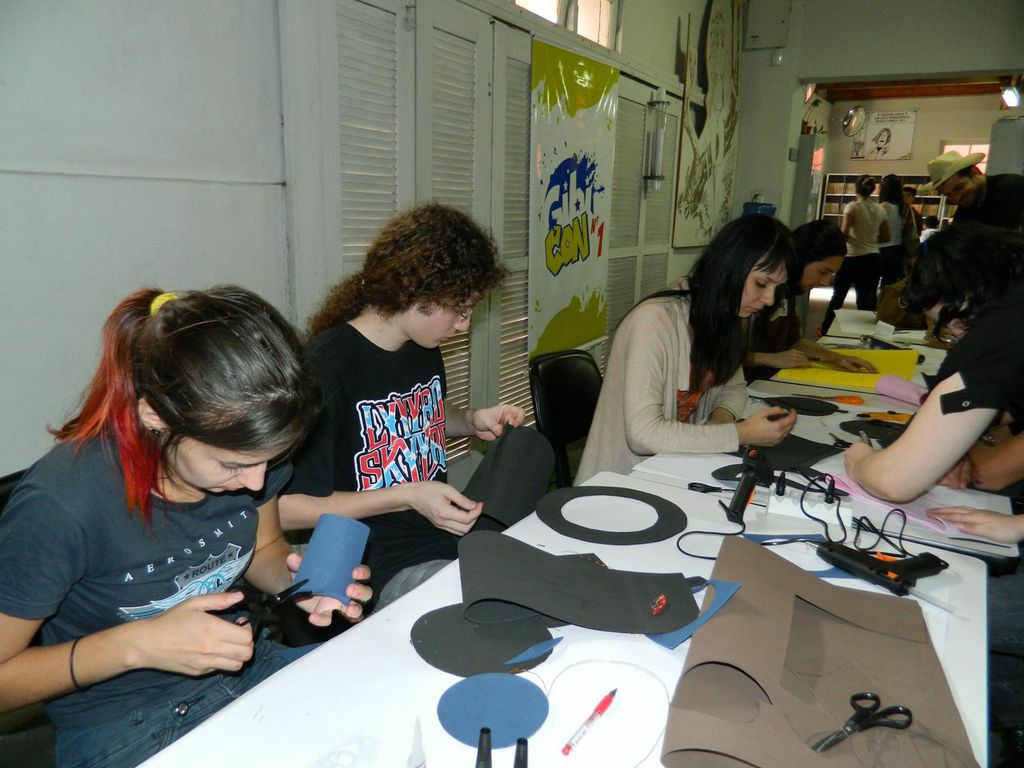
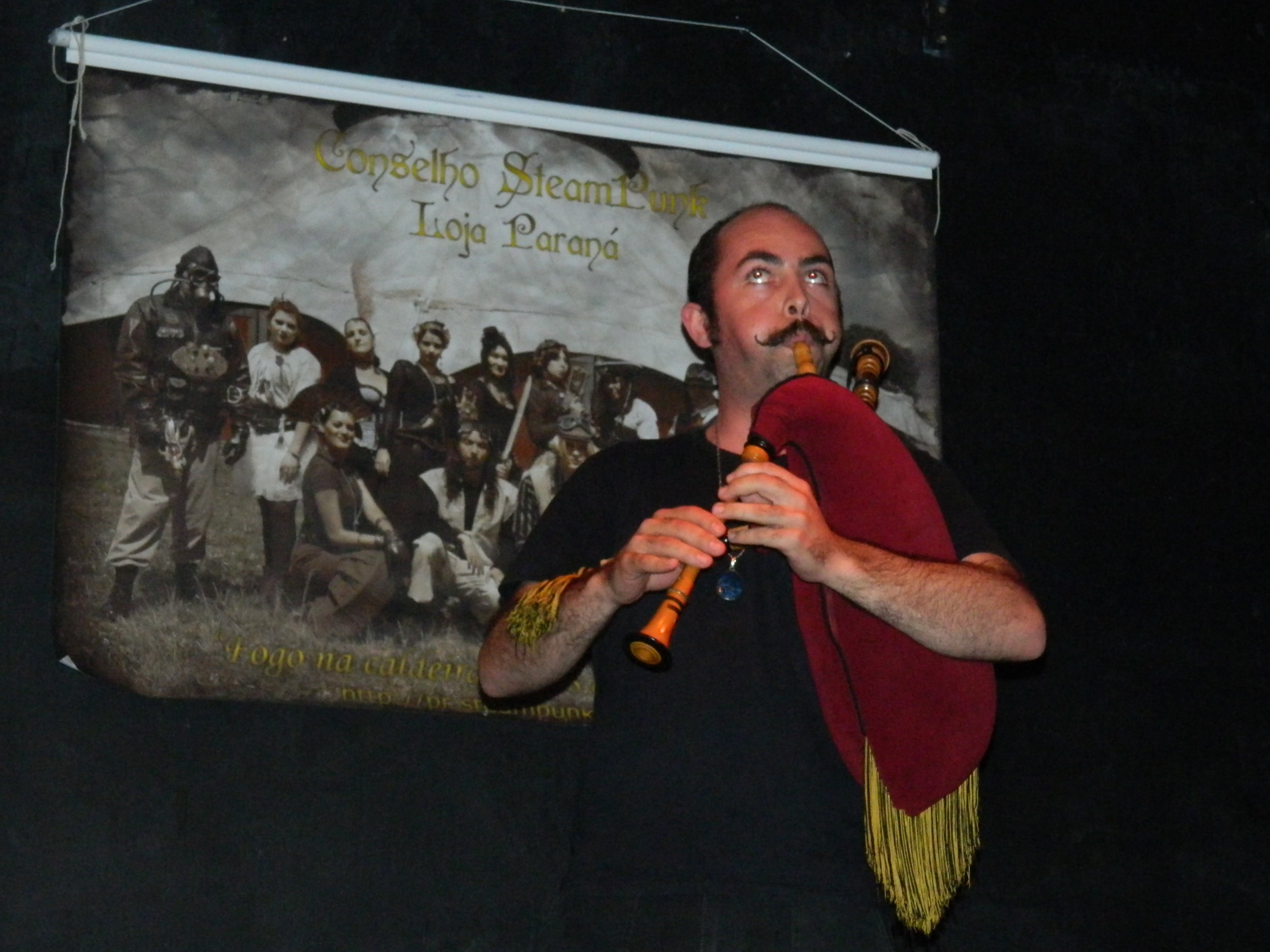
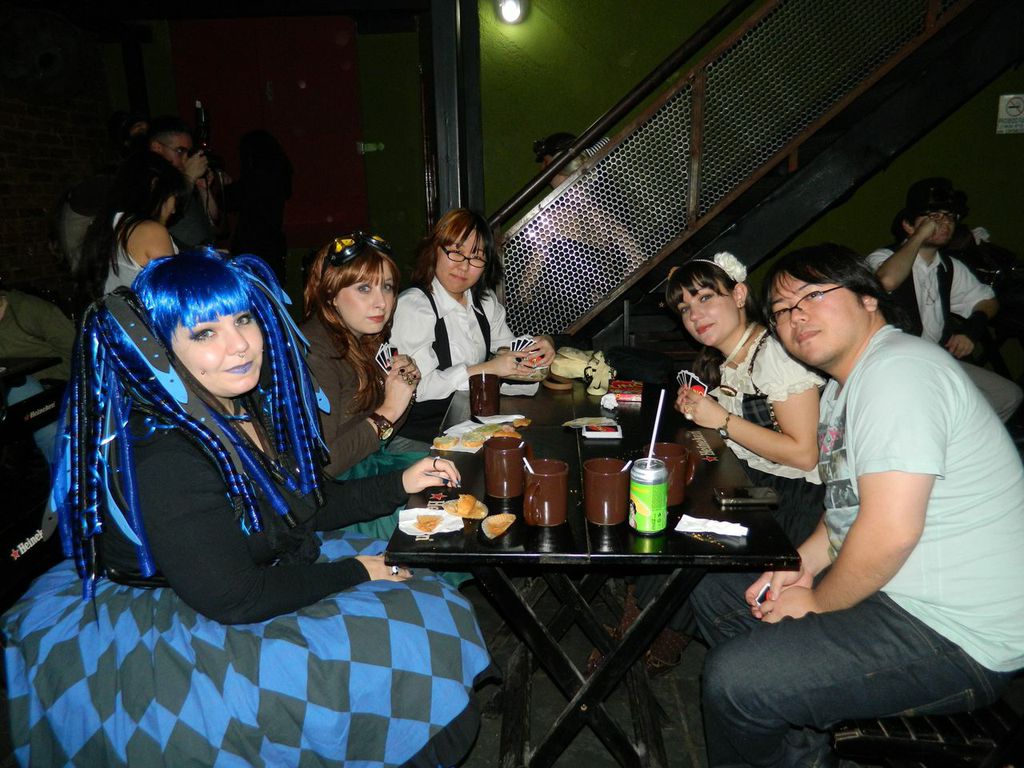 Steampunk event in Curitiba, Paraná, Brazil
Steampunk event in Curitiba, Paraná, Brazil